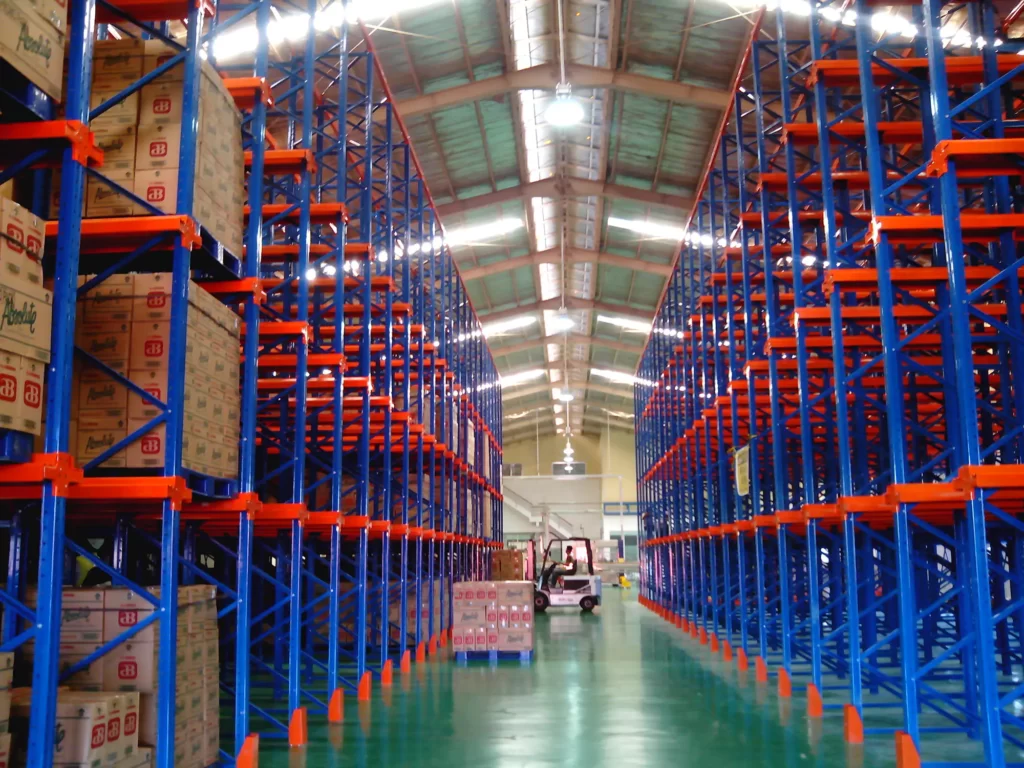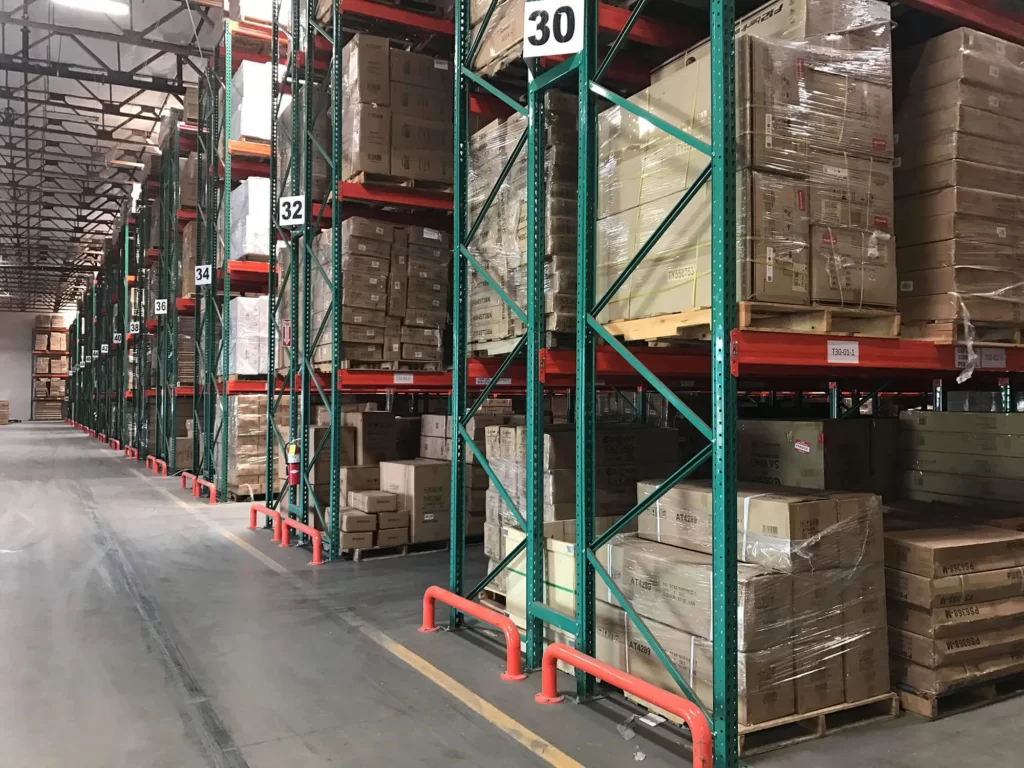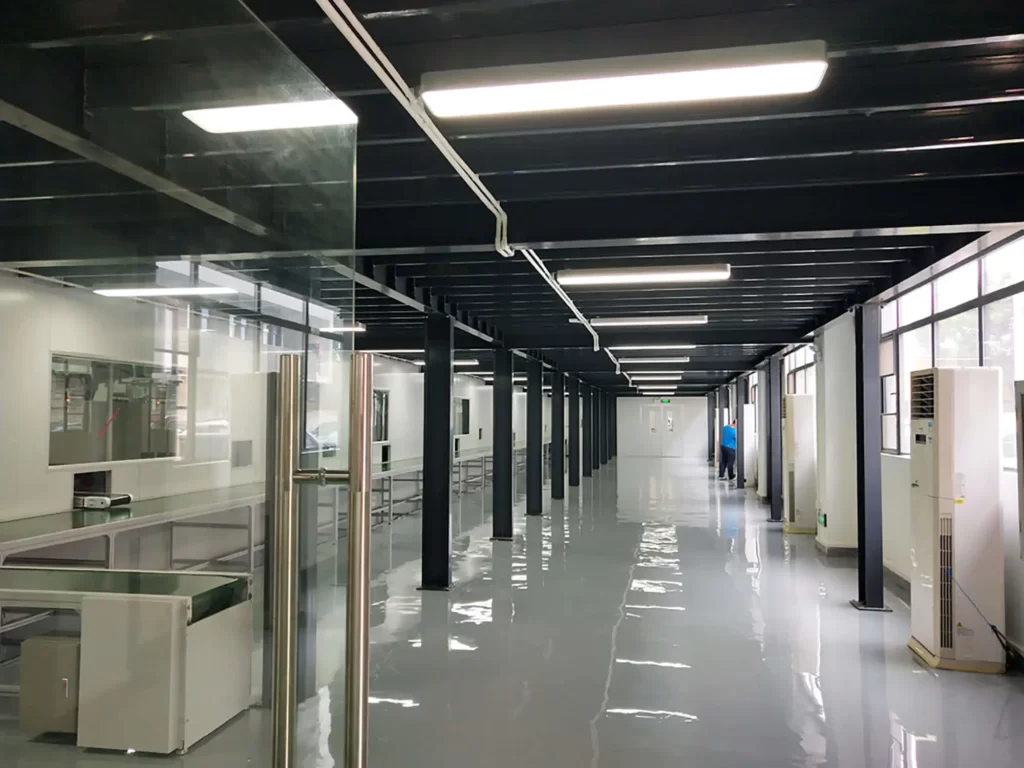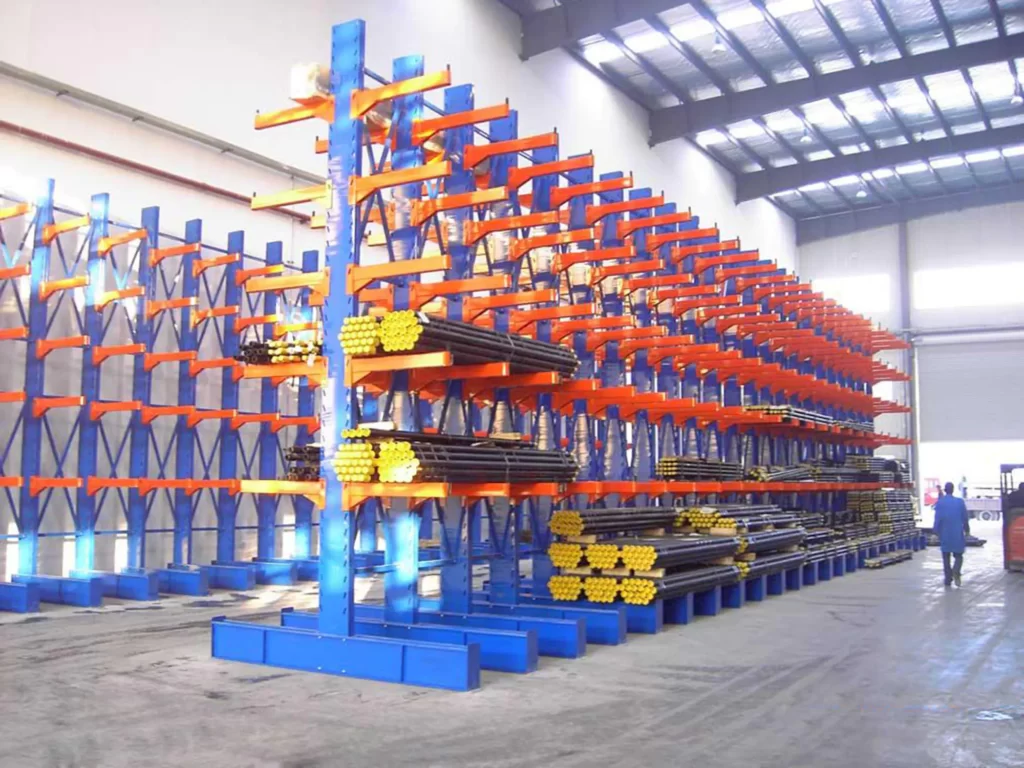Cold storage warehouse cost is a crucial constituent for businesses involved in storing and distributing temperature-sensitive products such as food, pharmaceuticals, and chemicals. The cost of building and operating a cold storage warehouse can significantly vary; therefore, it is important to understand the factors affecting these costs to make informed decisions.
In this blog post, we will explore all you need to know that may contribute to the cost of cold storage warehouses. We will also offer insights into ways businesses can manage these costs effectively.
Cold Storage Warehouse Cost
When it comes to constructing a cold storage warehouse, the cost per square foot can be significantly higher than that of a conventional warehouse and hence requires significant financial involvement since the overall cost can easily hit millions of dollars.
The price range for cold storage construction typically falls between $250 to $350 per square foot. It is about three times more expensive than building a traditional warehouse, which ranges between $80 to $100 per square foot. But at times, this range of costs could be way more than this. As Globest.com reports, there have been deals where cold storage warehouses have been sold for as high as $812 per square foot.
Typical Cold Storage Warehouse Construction Cost
As a general rule, a typical cold storage warehouse requires around 1,200 square feet of space. By multiplying the total square footage needed by the price per square foot, one may get the overall cost of building a cold storage warehouse. Construction costs for a 1,200-square-foot cold storage warehouse could range between $300,000 and $420,000 based on the industry average price range of $250 to $350 per square foot.
It is crucial to keep in mind that this is only a ballpark estimate and that actual building prices may change depending on your specific storage requirements.
Factors Affecting the Cold Storage Warehouse Cost
We will cover the factors in two separate sets: general factors, such as location, size, etc. And factors specific to a cold storage warehouse, such as the choice of refrigerants, insulation, etc.
General Factors That May Affect the Cost
Location
The location of a warehouse is very important in determining its cost. Land cost, closeness to transit networks, labor availability, and utility expenses can all vary depending on where you live. As a result, when planning a new cold storage warehouse, it is critical to evaluate the location carefully.
Warehouse Size
The size of your proposed warehouse would considerably impact its cost. It is simple—larger warehouses require more resources and personnel to build and manage. When calculating the final costs, it is critical to carefully assess the needs of the business and balance them against the budget allocated for your cold storage warehouse.
Design of the Warehouse
Related to the size is the design. The design of a cold storage warehouse, including the type of refrigeration system, insulation, and building materials to be used, also influence the final cost. To achieve optimal performance, selecting an appropriate design that balances functionality and cost-effectiveness would be a better approach, especially in the beginning.
Compliance with the Regulations
In the cold storage industry, compliance with rules and standards, such as those relating to food safety and environmental requirements, is critical. Noncompliance can result in substantial fines and legal consequences, which can considerably influence warehouse costs.
Technology
The use of technology, such as employing an automated cold storage system, may increase warehouse costs initially but may result in increased efficiency and cost savings in the long run. When considering whether to invest in technology, assessing the benefits against the expenses is critical.
Labor Costs
Labor costs, including salary and benefits, might vary depending on the warehouse’s location and the skill level necessary. To establish the entire cost of the warehouse, a thorough review of labor costs is required.
Factors Specific to a Cold Storage Warehouse
Refrigerants
To generate cold air, an anhydrous ammonia unit is used. The cost of refrigerants is a noteworthy consideration, as several factors lead to greater expenses.
Copper pipes cannot be used with ammonia, so suitable materials must be found, which may increase overall costs. Furthermore, ammonia can be harmful to humans, so workers will require extra training, and appropriate safety equipment and gear must be provided. Mandatory security measures must be in place to ensure safety, increasing the cost even further.
Insulation
Adequate insulation is essential to maintain the required temperature range in cold storage facilities. To prevent cooling units from being overworked and increasing power bills, the entire warehouse must be sealed tightly during installation to avoid leaks. Insulation can be achieved using various materials, each with different efficiency levels and R values. Fiberglass is cost-effective, while polyurethane foams are expensive but provide superior insulation. Higher R values result in greater upfront costs, but they lead to long-term cost savings.
However, some insulation types are flammable and pose risks to the environment. Multiple insulation materials may be used in cold storage warehouses to balance R-value, environmental impact, fire risks, and cost.
Fiberglass
Fiberglass is the most common insulation material used because of its weave of fine glass pieces and insulative material. However, it can pose risks to personnel if not handled cautiously because it is made of woven silicon and glass powder, which can damage the eyes, lungs, and skin. Fiberglass offers excellent insulation and is not flammable. Its R values range from 2.9 to 3.8, and its prices are affordable.
Mineral Wool
Mineral wool is an umbrella term for various insulation types, such as glass wool, rock wool, and slag wool. Glass wool is recycled fiberglass, rock wool is made from basalt, and slag wool is made from steel produced at steel mills. Mineral wool is not combustible but does not offer much fire resistance. Mineral wool can still be effective when used with other inflammable insulation materials. Its R values range from 2.8 to 3.5.
Cellulose
Cellulose is a loose insulation material made from paper, recycled cardboard, and other materials. Its R values range from 3.1 to 3.7, which is sufficient for most applications. Cellulose is not flammable and offers excellent fire protection because of its compact nature and lack of oxygen. Although it is available at economical rates, it can sometimes cause allergies.
Polyurethane Foam
Polyurethane foam is an expensive but worthwhile investment due to its excellent insulative properties. It has an R-value of 6.3 and is lightweight, making it possible to spray it into areas without insulation.
Polystyrene
Polystyrene is a waterproof thermoplastic foam that offers heat and sound transfer resistance. It comes in two main types: expanded polystyrene (EPS) and extruded polystyrene (XEPS) (aka Styrofoam). EPS has an R (ability to reduce heat flow) value of 4, while XEPS has an R-value of 5.5. Both materials have smooth surfaces, unlike other insulators. Polystyrene is often used for making blocks of insulating walls, but it is flammable and must be coated with a fireproofing substance before putting into use.
Power Supply/Backup
The HVAC system and lighting consume significant power in cold storage warehouses. Other components like automatic doors, response systems, and security monitors also require power, increasing operational costs. These panels comprise an insulation layer present between two metal sheets. They can be quickly and easily installed and offer excellent insulation properties. However, insulated panels can be expensive, particularly for larger facilities.
Another option is to use traditional construction materials such as brick, concrete, or wood and then add insulation using one of the abovementioned materials. This can be a cost-effective solution, particularly for smaller facilities. However, the insulation will need to be installed very carefully to ensure it works perfectly.
Construction Methods
While creating a cold storage warehouse, a variety of construction techniques might be used. Nonetheless, pre-engineered buildings and conventional construction are the most widely used in the industry. Using prefabricated building components that are put together on-site is known as pre-engineered building construction.
These parts are often composed of steel and have been carefully crafted to fit together. Particularly for bigger warehouse buildings, this technology is frequently quicker and more affordable than traditional construction.
Conventional construction entails starting from scratch to create the warehouse using traditional building supplies and techniques. This method may be more time- and money-consuming for larger buildings than pre-engineered building construction. It can, however, provide more design flexibility and beneficial modification.
Tips to Save Money While Constructing and Operating a Cold Storage Warehouse
- Plan for Energy Efficiency: Planning for energy efficiency is important during the design and construction phase. This includes using insulation that meets or exceeds local codes, installing energy-efficient lighting and HVAC systems and considering renewable energy sources like solar or wind power.
- Choose the Right Location: The place where a cold storage warehouse is situated is of critical nature. While it mainly depends upon the nature of your products, you must always look for a site close to major transportation stations with easy access to almost all highways for better supply chain operations. A well-chosen site can reduce transportation costs and save time.
- Invest in Quality Equipment: Invest in high-quality equipment like refrigeration units, doors, and temperature sensors. Although it may cost more initially, quality equipment can reduce maintenance and repair costs in the long run.
- Maintain Equipment Regularly: Constructing a cold storage warehouse is not a one-off job but a regular process. To keep it running without any issues, you have to ensure that the equipment is maintained properly and regularly. Keep a maintenance schedule for all the equipment used at the facility where the timeline and details of the maintenance requirement are clearly outlined. Communicate the schedule to your staff members and make sure that it is rigorously followed.
- Monitor Energy Usage: Regularly check your energy usage to find suitable places where you may cut costs. An energy management system can be installed to help find inefficiencies and zones that may need improvements in the future.
- Train Employees: Finally, where required, offer training to your staff to ensure they understand how to operate equipment safely and efficiently. Employees having the proper training can help minimize operating expenses as well as accidents and mishaps.
3 Main Types of Cold Storage Warehouses to Choose From
The kind of cold storage used determines the final cost when constructing a cold storage warehouse. Various cold storage facilities need special characteristics and considerations to ensure optimal temperature control, energy efficiency, and general functionality are attained without any problem. The information provided below will guide the facility’s design and construction.
- Refrigerated containers are the most basic and cost-effective option for storing small quantities of temperature-sensitive products. They are mobile and highly customizable, making them suitable for a wide range of uses. They can maintain temperatures between -30° and 70° F and be outfitted with different features like floor types, indoor lighting, and remote temperature monitoring.
- Blast freezers are very cold freezers that rapidly chill products before placing them in longer-term storage. They are often used at the intermediate stage between production and storage. Blower fans force chilled air over products, bringing the temperature down quickly while preserving the attributes like nutrients, texture, flavor, and shelf life while also reducing bacterial growth.
- Ultra-low temperature cold storage is designed for storing sensitive biological and research specimens at temperatures ranging from -4° to -122.8°F. ULTs tend to be smaller physically than conventional cold storage and function precisely to preserve highly sensitive materials like vaccines, medicines, blood, and tissue samples. They also have backup cooling systems like liquid nitrogen or carbon dioxide and robust monitoring systems to safeguard against system failures.
Conclusion
The cost of building and operating a cold storage warehouse can be high, and it is crucial to understand the various factors that affect these costs to make informed decisions. Each component plays a crucial role in determining the overall cost, from refrigerants to insulation, power supply, and construction methods. Based on the industry standard cost range of $250 to $350 per square foot, a 1,200-square-foot cold storage warehouse could cost between $300,000 to $420,000 to build.
However, it is important to note that construction costs may vary based on the business’s specific needs and location. By carefully considering these factors and managing costs effectively, businesses can successfully operate a cold storage warehouse while ensuring the safety and quality of their temperature-sensitive products.








